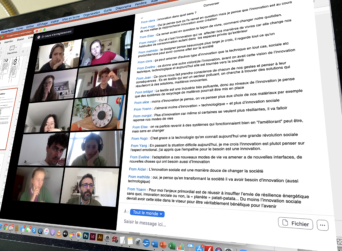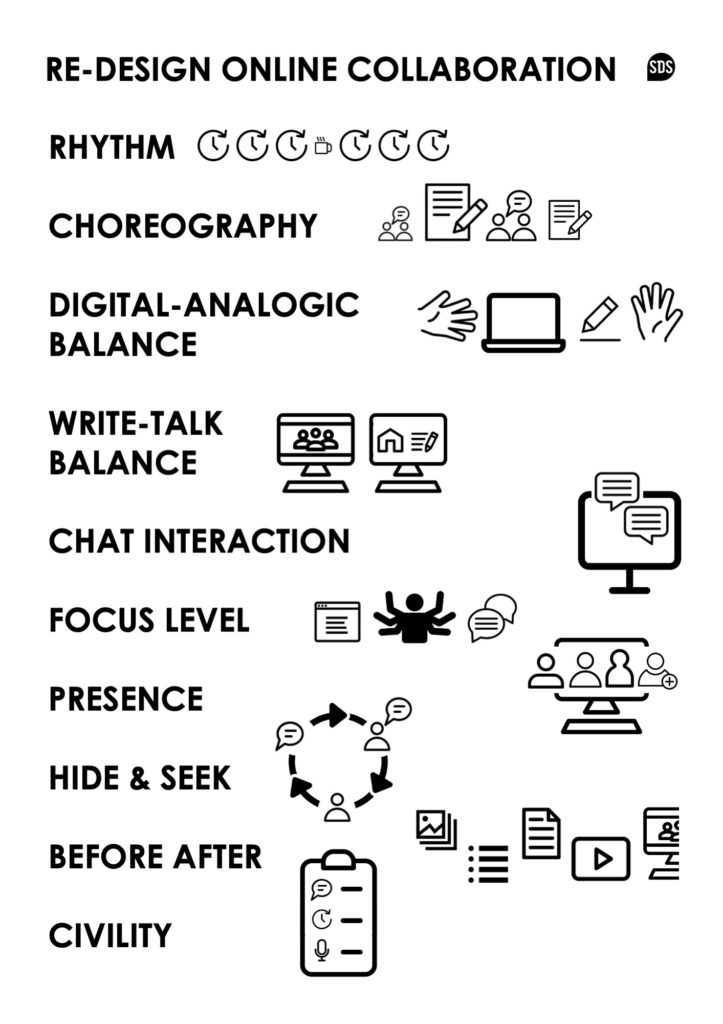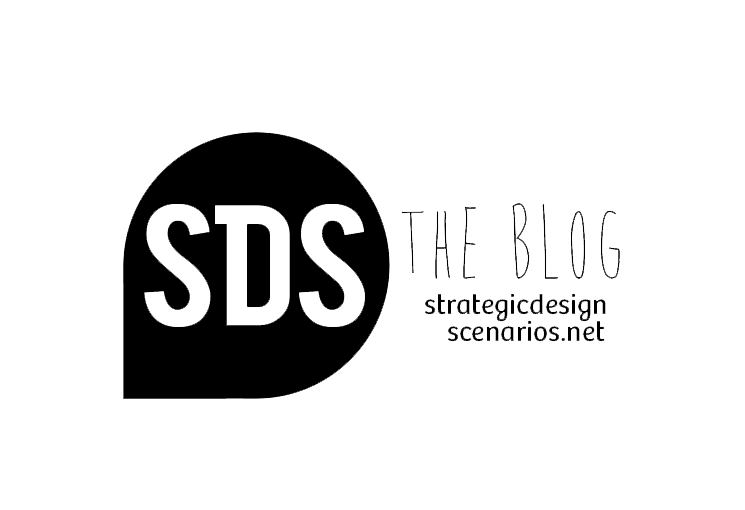
With online meetings, we often make the mistake of just copying what we usually do in face-to-face meetings. But instead, we should look at what online meetings are best suited for and for which face-to-face meetings are not!
Another important distinction to make is the one between confinement with digital cognitive saturation, social distancing fatigue, general anxiety, and what we can learn from that period, its evolving practices that we can take back as good practice for after the confinement period.
These 2 considerations draw 2 simple axes:
- « in-person collaboration strengths » versus « digital collaboration strengths»
- « confinement practices » versus « post-confinement practices »
Many more dimensions could be taken into consideration: big/small groups; good/bad connection; do/think activities; etc. However, for these, a large variety of tutorials and tips can already be found on the Web. Here, we’ll focus on the 2 above-mentioned and less developed axes, in order to re-design online meeting/workshop practices…
The « digital collaboration strengths » tend to be on the opposite side of the « in-person collaboration strengths »: what is easy and spontaneous to do in one seems difficult and tiring in the other, and vice versa.
Don’t mimic face-to-face meetings!
The key message here is to design a different type of online collaboration, instead of trying to mimic face-to-face meetings approaches. You’ll find hereafter a series of design guidelines showcasing the main polarisation points between in-person and online collaboration processes.
They are not just tips to improve online meetings, but rather an invitation to rethink online collaboration, more in-depth and coming up with an entirely different structure for organising meetings.

Rhythm
2 to 3 hour long face-to-face sessions are organised with short coffee breaks in between. Online sessions should be shorter, taking 30 to 60 min. with more time to regenerate in between.
Choreography
Getting together in-person, in order to discuss issues, brainstorm ideas, generate plans… is usually followed by debriefing or synthesis. Shorter interwoven sessions should be scheduled online, mixing creative divergent activities with convergent moments.
Digital-analogue balance
Face-to-face exchanges are based on physical interactions in the room, wherein computers tend to be only technical supports. With online meetings, activities should also be designed on paper, by manipulating physical objects, showing them in front of the screen, or even closing the screen, in order to give space to asynchronous work and compensate for the digital saturation.
Writing-talking balance
In-person meetings are based on verbal exchanges and natural group speech interactions. Online meetings should use more visuals and rely more on written supports, reducing the dependence on the often less fluid digital connection.
Chat interaction
Face-to-face group interaction is based on verbal communication, while text is used to take individual notes. Online interaction should rely mainly on the chat-box and shared note-taking documents, while speech should be used in moderation to keep the human touch and for commenting.
Focus level
Guidelines for in-person meetings aim at being efficient and keeping people focused. Online meeting guidelines should take advantage a more diluted interaction, distributed attention caused by different local conditions and unexpected disruption in each remote location.
Presence
Physical presence, body language and eye contact are at the core of in-person meetings. With online meetings, participants’ presence is reduced to thumbnail talking heads, and meetings’ attractiveness should be enhanced by rotating moderation, surprise guests, using physical objects such as a timer in additional windows.
Hide & seek
In-person meetings don’t allow participants to hide or withdraw, unless they walk out of the room. Online meetings should alternate between different forms of presence: full vision to socialise, audio-only for more focused discussions and image-only for silent breaks.
Before and after
In-person meetings are prepared through a shared agenda and, quite often, a considerable amount of work has to be done after the session for synthesis and reporting purposes. Online meetings should work oppositely, with prepared material shared in advance, light questionnaires, short video statements, co-listed discussion points and the meeting time should focus on sharing and adjusting.
Civility
Face-to-face code of conduct is more or less given for granted, based on people’s education and long experience with such meetings. Online interaction should insist on good practice of computer’s mediation tools and display explicit online civility such as mic use, speaking turns, time rules, etc.
What’s next?
We have now profusely illustrated the first axe showcasing how « digital collaboration strengths » are generally of a very different nature and opposite to « in-person strengths ».
With the second axe, « confinement practices » versus « post-confinement practices », it is important to modulate our list of guidelines. In these confined times at the same time this text is being written, people are feeling saturated by digital socialisation and screen fatigue. They suffer from social distancing and the lack of human contact.
After confinement, what will likely remain are the more mixed practices: it’s not because you are in the same room that you should interact within the face-to-face model only. You can organise a meeting the same way you would organise an online meeting, if this suits better your collaboration purposes!

